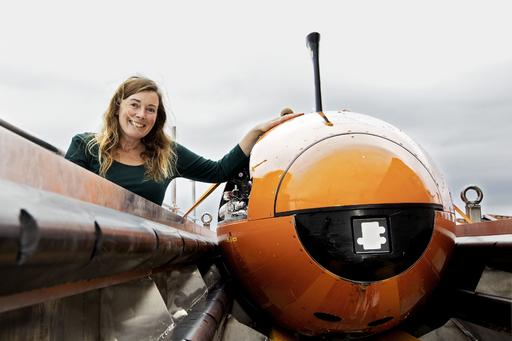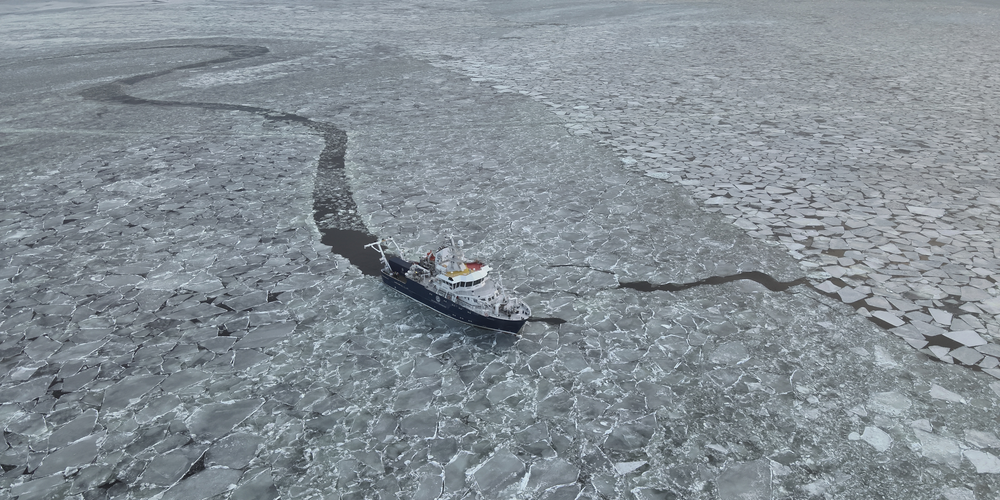A research team from the University of Gothenburg is for the first time travelling to Greenland with the University's research vessel R/V Skagerak to conduct studies underneath fjord glaciers. On board is the underwater robot Ran, which will be sent down under the ice.
"The research questions are the same as those we have worked on in Antarctica: How fast and in what way is the ice melting," says Anna Wåhlin, Professor of Oceanography at the Department of Marine Sciences.
The ice sheet has been shrinking for many years in Greenland, but researchers are not entirely sure what is driving the retreat. What the researchers want to find out during this summer's expedition is whether the glacier is melting from the bottom or the top, or whether the meltwater is flowing out through channels inside the glacier.
"We will send Ran underneath the glacier in three fjords to scan ice formations and see how the ice moves. We will also take drone footage of the ice from above and make both photographic and infrared measurements," says Anna Wåhlin, Professor of Oceanography, Department of Marine Sciences.

Photo: Johan Wingborg
Study ice tracks on the seafloor
Anna Wåhlin will also study the seafloor in the fjords to look for the ice sheet's historical tracks. By finding and analysing such tracks, it's possible to see how the ice has changed and shifted. For example, where the ice has been located in the past, and how quickly it has retreated.
"We can also see the processes that occur when the ice is scraping against the seafloor. By considering all these parameters together, we can create better models to predict how the ice will change in the future," says Anna Wåhlin.
The expedition will also analyse the meltwater in the ocean outside the fjords.
"We can find out how old the meltwater is. If it has been in contact with soil, it can be measured," says Anna Wåhlin.
R/V Skagerak makes cutting-edge research possible
This is the first time Anna Wåhlin has travelled to the Arctic to conduct these studies with Ran. She has previously made the same types of measurements with Ran under the Thwaites Glacier in Antarctica, in international research collaborations.
One of the reasons why this expedition is possible, with researchers from only the University of Gothenburg, is the presence of the research vessel Skagerak, owned by the University of Gothenburg.

"It's a fantastic opportunity to be able to use R/V Skagerak for individual research expeditions in the Arctic. In the past, we have been dependent on the icebreaker Oden, but the problem is that these are often huge expeditions with many researchers and a consensus is required on board, which means that cutting-edge research cannot be carried out."
"Above all, this is an opportunity for young researchers to pursue their own research and ideas," says Anna Wåhlin.
Text: Annika Wall






